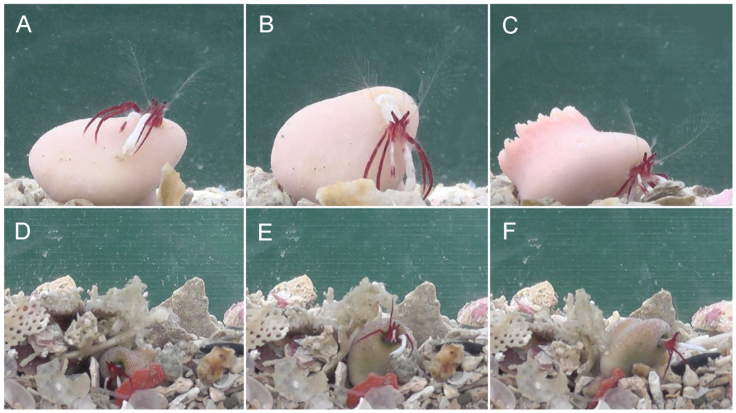Newly discovered hermit crab species carries around a giant coral house that grows around it
The coral provides the sea creature with shelter and protects it from predators.

A new species of hermit crab has been discovered in southern Japan. Unlike other hermit crab species, this one carries around its very own coral house with it everywhere it goes. Although hermit crabs are known to be able to convert any shell into protective armour, this newly discovered species, named Diogenes heteropsammicola, after the coral it carries, can actually lug around its coral dwelling.
The hermit crab species has bright red legs and gleaming white claws. Although the sea creature measures only a few millimetres, it is still capable of carrying a giant-sized coral that doubles as its home. What is more, the coral comes with a sting, protecting the crab from potential predators such as octopus, other larger crabs and sea creatures.
Although most hermit crabs are known to flit between one shell to another, in the case of this newly discovered species, the coral shell appears to grow around the crab, with the sea creature's body safely nested inside a cavity in the coral. In other words, Diogenes doesn't need to seek shelter.
The coral inhabited by the hermit crab appears to be a solitary coral, instead of reef-building kind. These corals which are generally found on shallow seabeds are under the risk of being overturned by strong currents or buried under sediments. In order to survive, some corals, also known as walking corals, evolved to forge amazing symbiotic partnerships with other creatures. In other words, the walking corals use other species to do the walking for them.
Momoko Igawa, one of researchers from Kyoto University, who discovered the new hermit crab species, told Sara Mynott, a marine ecology PhD researcher from the University of Exeter, that typically, a young coral first settles on a small shell, which has already been colonised by a sipunculan.
"The coral then grows over and ultimately beyond the shell, providing a coiled cavity for the equally growing worm partner," Igawa said. A similar process may have led the hermit crab to inhabit the coral. So, the corals provide shelter to the hermit crabs and in return the sea creatures transport the corals around from one place to another on the sea floor, making this one of nature's most remarkable evolutionary relationships.
The details of the discovery have been published in the journal PLOS ONE.

© Copyright IBTimes 2024. All rights reserved.







